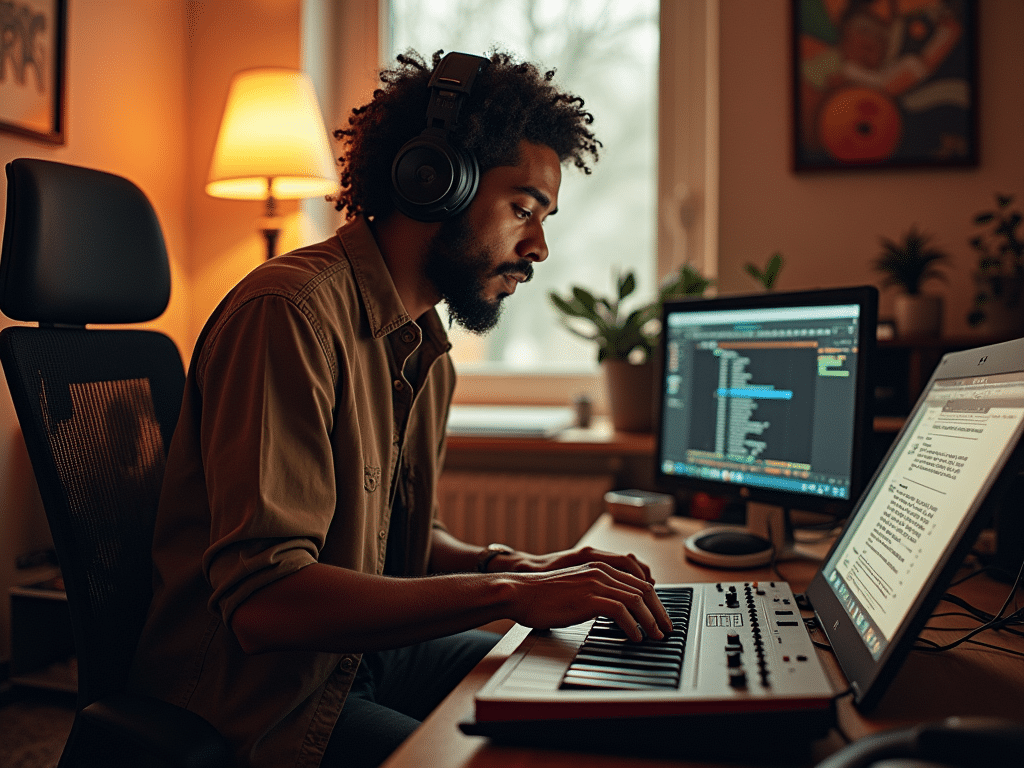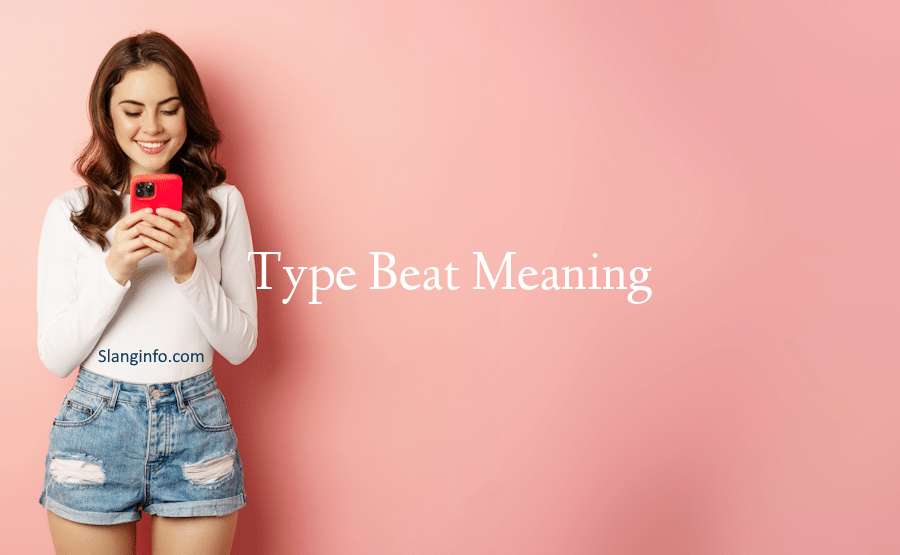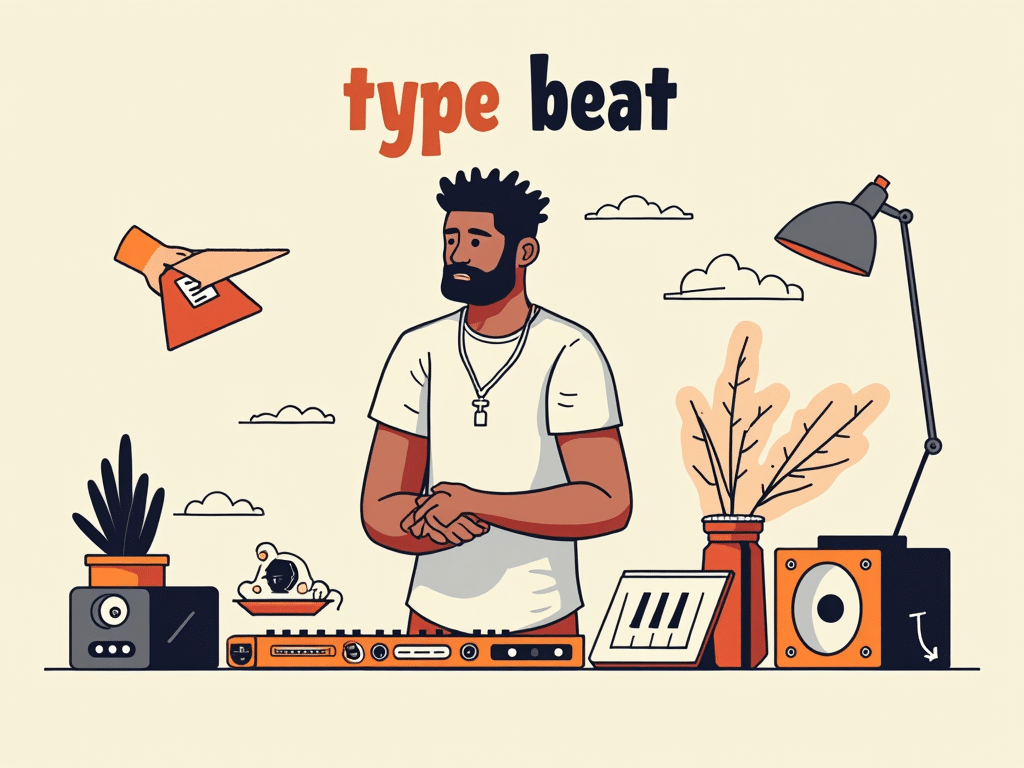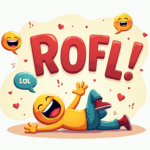When you hear the term “type beat,” what comes to mind? For many, it refers to a specific kind of instrumental track that mimics the style of popular artists. This term has become a staple in music production, particularly in genres like hip-hop, R&B, and pop. Let’s break down what type beats really mean and how they play a significant role in the music industry today!
| Key Takeaways | Meaning |
|---|---|
| Definition | Instrumental tracks made to sound like something your favorite artists would use. |
| Origin | The term emerged in the mid-2000s but gained traction in the 2010s. |
| Common Usage | Used by producers to attract artists looking for specific sounds. |
| Cultural Impact | Integral to the beat-making economy and artist discovery. |
Type Beat Meaning: Understanding This Trendy Term 🎶

The Origins of Type Beats
To understand type beats, we need to look at where they came from:
- Historical Context: The term “type beat” originated from the informal practice of artists describing their desired sound by referencing a particular musician’s style. For example, saying “I want a Drake type beat” helps producers know exactly what vibe the artist is going for.
- Evolution: As music production tools became more accessible, aspiring producers began creating beats that emulated popular sounds, leading to the rise of type beats as a genre.
I remember when I first discovered type beats on YouTube. I was searching for something similar to my favorite artist’s sound, and there it was—a whole world of beats labeled with names like “Kendrick Lamar type beat.” It was a game-changer!
Also read: SIDE EYE
What Is a Type Beat?

A type beat is essentially an instrumental track designed to emulate the sound and style of a particular artist or genre. Here’s how it works:
- Emulating Styles: Producers create beats that capture the essence of well-known artists, allowing other musicians to rap or sing over them.
- Accessibility: These beats provide an easy way for aspiring artists to find high-quality instrumentals without needing to hire expensive producers.
For instance, if you’re looking to record a song with a vibe similar to SZA, you can simply search for a “SZA type beat” online and find plenty of options.
Also read: Vidi Veni Vici Meaning
Why Are Type Beats So Popular?
The popularity of type beats can be attributed to several factors:
- Quick Access: Aspiring musicians can easily find instrumentals that match their desired sound without spending hours in the studio.
- Artist Discovery: Many successful collaborations have started with an artist purchasing a type beat online, leading to major hits.
- Marketing Strategy: Producers often include popular artist names in their titles to improve discoverability on platforms like YouTube and SoundCloud.
I once heard about a producer who sold a type beat for “Panda” by Desiigner for just $200! That track went on to top charts, proving how effective type beats can be for both producers and artists.
Also read: Why Is Liquor Called Spirits
How to Create Compelling Type Beats
Creating effective type beats requires skill and understanding of music production techniques. Here’s a simple guide to get you started:
- Study Your Target Artist:
- Listen closely to their songs and identify key elements like tempo, instrument choices, and overall vibe.
- Pay attention to their signature sounds and production techniques.
- Choose Your DAW:
- Select a Digital Audio Workstation (DAW) that suits your workflow—popular choices include FL Studio, Ableton Live, and Logic Pro.
- Invest in quality plugins that can help you achieve the desired sound.
- Start with the Foundation:
- Set your tempo and create a basic drum pattern.
- Focus on getting the kick and snare right; these elements often define the character of your beat.
- Add Melodies and Harmonies:
- Layer melodies that fit within the style you’re emulating.
- Experiment with different instruments until you find the perfect combination.
- Review and Refine:
- Compare your beat with original tracks from your target artist.
- Make adjustments until you capture the essence while adding your unique touch.
Creating type beats can be incredibly rewarding! It allows you to showcase your skills while connecting with artists who are looking for that perfect sound.
Also read: Boujee
The Cultural Impact of Type Beats 🎧
Now that we’ve covered the basics of type beats, let’s explore their cultural significance and how they’ve transformed the music industry.
Type Beats in Everyday Music Production
Type beats have become a vital part of the music production landscape. Here’s why they matter:
- Accessibility for Aspiring Artists:
- Low Barrier to Entry: Many up-and-coming musicians don’t have the budget to hire professional producers. Type beats allow them to access high-quality instrumentals at a fraction of the cost.
- Diverse Selection: With countless producers creating type beats, artists can find exactly what they need to match their style or mood.
- Collaboration Opportunities:
- Connecting Artists and Producers: Type beats create a bridge between producers and artists. Many successful tracks have emerged from these collaborations, often starting with an artist purchasing a type beat online.
- Networking: Producers often gain recognition when their beats are used by popular artists, leading to more opportunities in the industry.
The Rise of Online Platforms

The internet has played a huge role in popularizing type beats. Here’s how:
- YouTube and SoundCloud: These platforms are flooded with producers showcasing their type beats, making it easy for artists to discover new sounds.
- Social Media Promotion: Producers use platforms like Instagram and TikTok to promote their beats, often sharing snippets that go viral.
I remember scrolling through YouTube and stumbling upon a producer who had millions of views on his “Drake Type Beat.” It was incredible to see how one video could reach so many people!
Also read: SZN
Memes and Humor
Type beats have also made their way into meme culture. Here’s how:
- Humorous Takes: People create memes that poke fun at the idea of type beats, often exaggerating what a “type beat” might sound like. For example, “Mom’s cooking type beat” might refer to a comforting or nostalgic sound.
- Relatable Content: Memes about type beats resonate with many who understand the struggle of finding the right instrumental for their vibe.
The Future of Type Beats
So what’s next for type beats? Here are some predictions:
- Increased Collaboration with AI:
- As technology advances, we might see AI-generated type beats that mimic popular artists’ styles even more accurately.
- Expansion into New Genres:
- While hip-hop and R&B dominate now, expect to see type beats branching into other genres like pop, rock, and electronic music.
- Global Influence:
- As music becomes more globalized, we may see type beats reflecting diverse cultural influences, leading to new sounds that blend various styles.
Conclusion
In summary, type beats have revolutionized how music is produced and consumed today. They provide aspiring artists with accessible tools to create their own music while allowing producers to showcase their talents on a global stage.
Also read: CNC Meaning
So whether you’re an artist looking for that perfect sound or just someone who enjoys discovering new music, understanding the meaning and significance of type beats can enhance your appreciation for modern music production.
If you want to dive deeper into the world of music slang or learn about other related terms, check out our articles on savage or weeb. Keep exploring those sounds! 🎶✨







